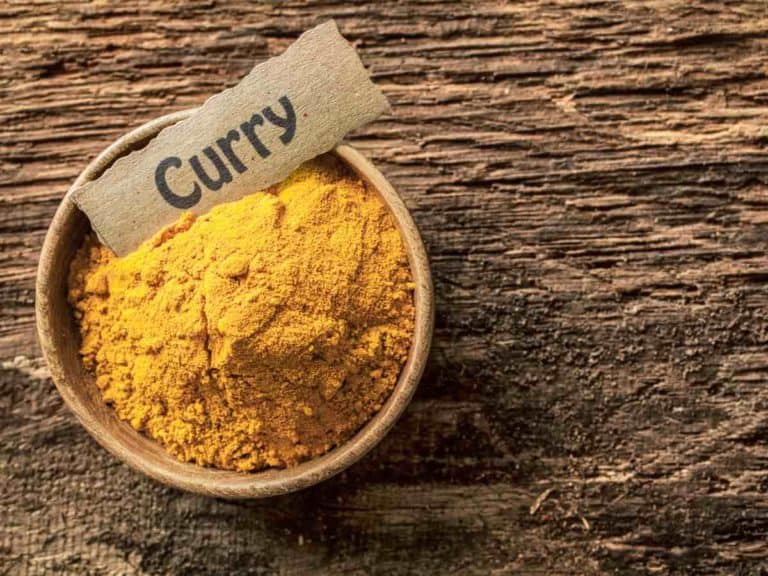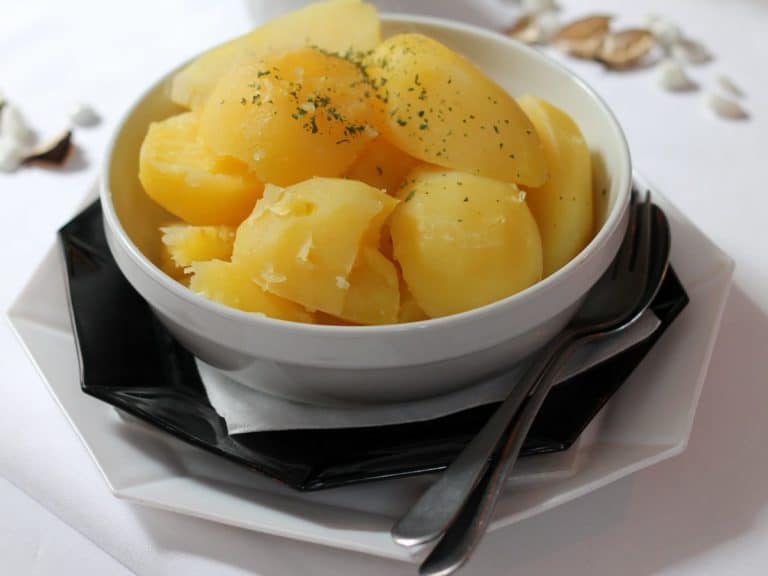Best Substitutes for Store-Bought Clam Juice
When cooking, sometimes we forget we’re missing at least one of the ingredients. But a great thing about cooking is that there can be substitutes to whatever you’re missing. Here, you’ll find out about clam juice substitutes.
Clam juice is like a stock from clams. Thus, you can use other stocks or broths as clam juice substitutes. You can use fish stock, chicken stock, shrimp stock, and vegetable stock. You can also use dashi, oyster liquor, and fish sauce. If you’re up for it, you can make your own clam juice.
You might be thinking that clam juice is the juice extracted from the clams themselves, but that isn’t the case. Clam juice is the liquid from steamed clams. Clam juice has a crisp salty flavor with a bit of tang. The best analogy of the taste of clam juice is that it is like concentrated ocean water. It doesn’t taste fishy or metallic.
Of all the choices you read, making your own clam juice will be the best one that matches that in the market. The other choices are like many substitutes; none of them can fully mimic clam juice. But they won’t taste out of place in your dish, and they can do their purpose in making it delicious.
Keep reading below on how you can use these clam juice substitutes.
8 Clam Juice Substitutes (From Best to Good)
With such versatility, having clam juice in your pantry is highly recommended. But don’t worry if you don’t have any. There are still other things you can use as substitutes.
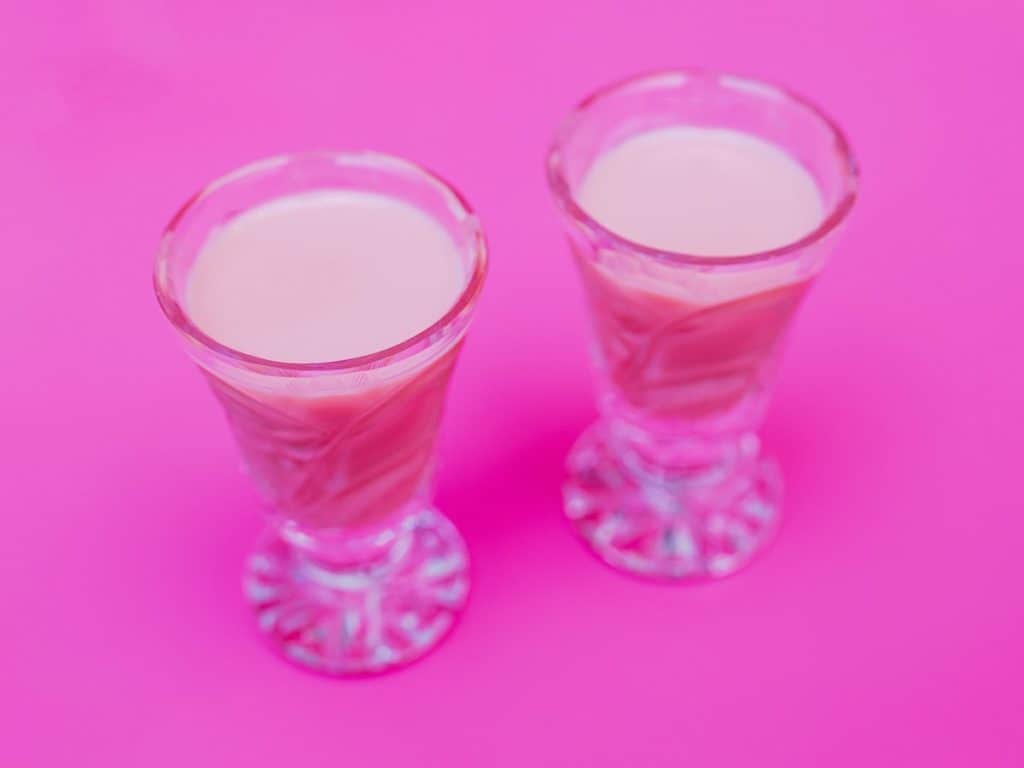
Homemade Clam Juice
Let’s start with the best substitute for store-bought clam juice, and that is to make your own. If you’ll make a dish that calls for clams, then you can use some of those clams to make clam juice. First, clean your clams, both outside and inside.
Clams are filter feeders. They eat by sucking water in. They “filter” the water using special structures that act as a filter or strainer. These structures keep any food in the water. Then the animal expels the “filtered” water out.
The thing is, food isn’t the only thing the animal keeps. It can also take in other particulate matter like dirt, or worse, pollutants. Hence, if you’ll cook with clams, you’ll want to clean the insides too.
To clean, the insides, you can have the clams spit out their contents. To do that, you need to trick them into thinking they’re still in seawater. Put the clams in a large bowl, and add 17 ounces (~500 mL) of water with 15 g of salt. Let the clams sit in the saltwater for at least 30 minutes. The longer the better. After that time, remove the clams.
You’ll notice the water will turn dirty. Discard the water. Then clean the outside of the clams using water and a brush. You can also sprinkle the clams with coarse salt and use that as a scrubbing agent as you scrub the clams with your hands. Afterward, rinse out the salt.
Once the clams are clean, begin heating water. If you’re in a rush, start heating the water as you clean the clams.
A good water:clam ratio is 17 ounces (~500 mL) of water for every pound (~0.5 kg) of clams. Once the water starts gently bubbling, reduce the heat to low. Add the clams, then cover the pot. After 5 minutes or so, some of the clams will start opening. Remove the clams that open.
The clams will open up at different times, so keep an eye on them. If you don’t remove the clams once they open, the clam meat will toughen.
Once all the clams have been removed, you’ll be left with the liquid clam juice. Strain out the clam juice to remove any particulate matter. If you want a more flavorful homemade clam juice, you can add flavoring agents to the water.
Add them before you put the clams. Flavoring agents you can use are garlic, ginger, and green onions.
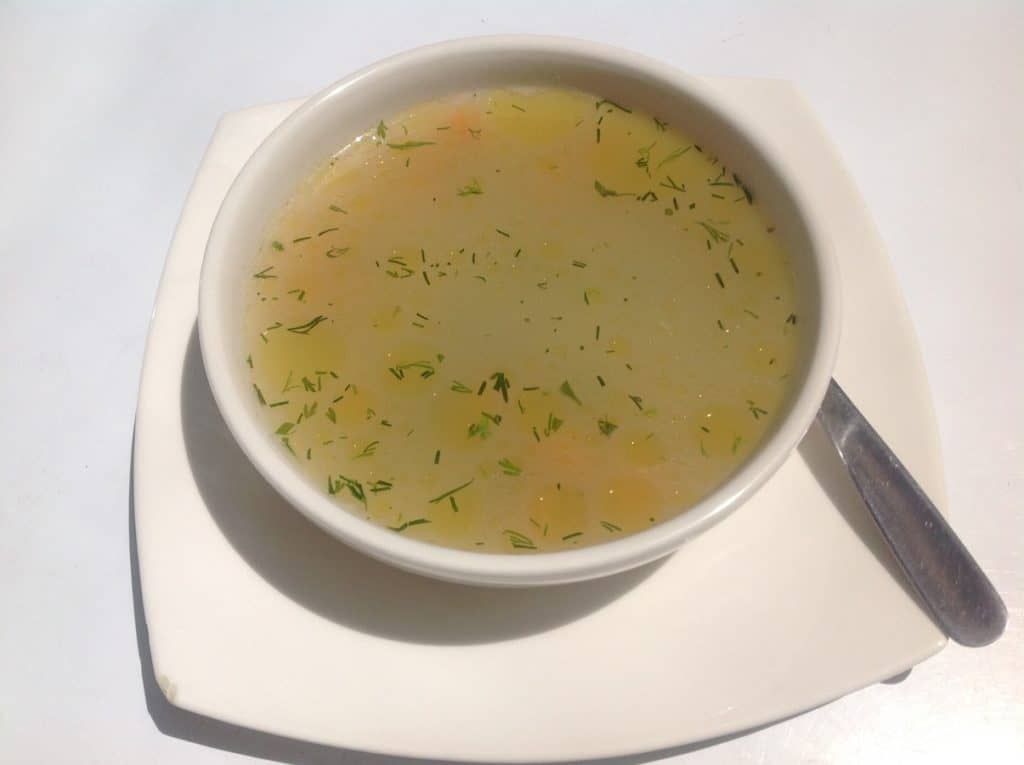
Fish Stock
Fish stock is a stock made from the bones, heads, and other trimmings of different fishes. Other ingredients include spices like onions, aromatic vegetables, and herbs.
You can use fish stock as a clam juice substitute in savory dishes that need ocean-y flavors. The flavor is lightly fishy. It isn’t overpowering. It also has a yellowy color and a slightly thick texture.
Fish stock is a good clam juice substitute for fish and other seafood dishes. However, fish stock isn’t a good substitute for beverage recipes that call for clam juice.
Fish Sauce
If you are familiar with Asian cuisine, then you’ve probably encountered fish sauce. Fish sauce is a liquid condiment made from fermented fish or krill. The main ingredients are fish or krill, and salt. For fish, anchovies are usually used because of their small size.
The smaller size means a larger surface area. A larger surface area makes it easier to extract the sauce. The fish are thoroughly mixed with salt. The fish:salt mixture usually ranges between 3:1 and 7:2.
The mixture is then stored in containers. Large manufacturers would store the fish:salt mixtures in wells that can hold 10 tons of fish and salt.
After 4 to 6 months the liquids in the fish naturally come out. This liquid is the fish sauce. If larger fish are used, this liquid extraction process can take 12 months or more. Once the liquids come out, the mixture is stored for at least another 12 months.
During that time, the natural bacteria on the fish start fermenting. Once done, the sauce is filtered. It is no longer pasteurized because the filtration process can remove most of the bacteria. Moreover, the final sauce has a high salt content. This high salt content can prevent other bacteria from thriving in the fish sauce.
Fish sauce is immensely different from fish stock. Fish sauce has a dark brown color and a thin texture. But the flavor is where the two are distinguishable. Fish sauce has a very strong flavor, so you don’t need to use much to get an impact.
The flavor is distinctly salty, fish, and savory. It may also taste a bit oily because of the natural oils from the fish. A tablespoon or few will do the job. Fish sauce is great for savory dishes like roasted vegetables, marinated meat, and stir-frys.
Like fish stock, you can’t use fish sauce in beverages.
Shrimp Stock
Shrimp stock is also called prawn stock. It is a stock made from shrimp shells and heads. You can buy shrimp stock online or from grocery stores. You can also make shrimp stock yourself if you have shrimps on hand. You only need the shells and heads.
You can use the shells and heads from raw and/or cooked shrimp. If you’ll use shells and heads from raw shrimp, remember to cook the stock properly. Below is a recipe for shrimp stock using a pound of shrimp shells and heads.
Ingredients
- 1 tbsp of cooking oil
- 1 lb of shrimp shells and heads
- 1 1/2 cups of water
- Other flavoring agents
In a large skillet or wok, heat oil over low to medium heat. Then add the shrimp shells and heads. Stir fry the shells and heads for about 2 or 3 minutes.
Afterward, add the water. Bring everything to a simmer. You can press down on the shells and heads to squeeze out the flavor.
Simmer for about 5 minutes. You can add other flavoring agents during this time, like seasonings and spices. After 5 minutes, strain out the stock. Press down on the shells and heads again to get as much drop as you can.
You can use shrimp stock in the same dishes where you can use fish stock. Like fish stock, plain shrimp stock is mildly savory with hints of ocean-y flavor. It also has a yellowish to orangey color.
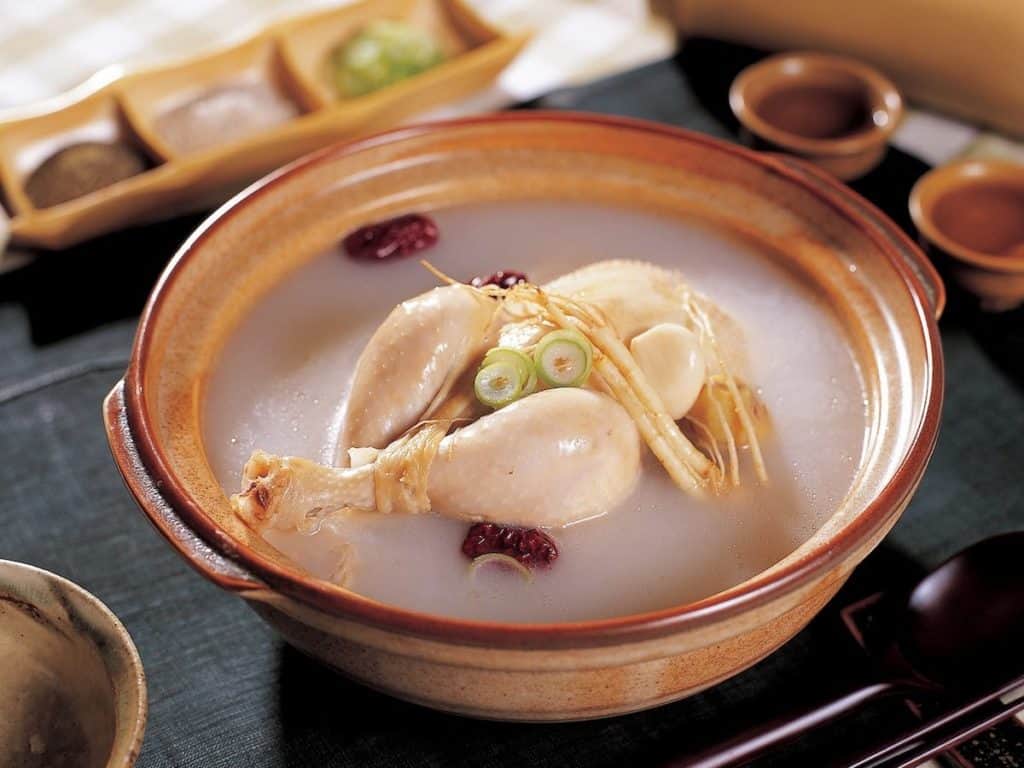
Chicken Stock Or Broth
Either chicken stock or chicken broth can act as a substitute for clam juice. The main difference between the two is that chicken stock is mostly made from bony chicken parts.
Chicken broth is mostly made from meaty parts. The usual suggestion is to replace every cup (~240 mL) of clam juice with 1.5 cup of water and 1.5 cup of chicken stock or broth. Chicken stock or broth will help add umami to any general savory dish.
The only exception is with seafood. If you are making a seafood dish, then the chicken stock may not be the best option. Or at least it should only be a supplement for the umami flavor.
You can make chicken stock from all the leftover bones from a chicken carcass. It’s okay if there are some meat, tendons, and ligaments still attached to the bones. If the bones are leftover from cooked chicken, then you can directly put them on simmering water.
If the bones are from raw chicken, you can also put them in simmering water.
However, you can choose to pre-cook them. For example, you can sauté them until they’re brown to bring out more flavor. The common water to chicken parts ratio is 3:1. The less water you use, the more concentrated the flavor will be.
Simmer the chicken parts for about 3 hours. Somewhere in the middle of simmering, you will see the foam-like matter on the water’s surface. This is called scum. The scum is the proteins from the chicken parts. You can choose to remove the scum for a clearer stock.
The main reason for removing the scum is aesthetics. If you don’t remove it, it will eventually break apart and spread in your stock. Your stock will then turn out cloudy, but it is still okay to consume.
The process is similar when making chicken broth. Instead of using only the bony parts, you can use the more meaty parts. You can use the same 3:1 water to chicken parts ratio as a start. Feel free to add aromatic vegetables and spices when making your either the stock or broth.
Vegetable Stock
Vegetable stock is a versatile stock that you can use in many dishes. You can use any vegetable of your choice. The vegetables that are used by many are the aromatic ones. Examples are celery, peppers, carrots, garlic, and onions.
You may want to be careful when using cruciferous vegetables like broccoli. These vegetables are high in sulfur. Using too much of them can make your stock overly bitter. Tomatoes and mushrooms are great additions because they give an umami flavor. Spices and herbs are also a must.
You can use vegetable stock in both food and beverages. For beverages, vegetable stock is mostly used in tonic drinks, but feel free to be adventurous with it. You just have to pick the right vegetables, herbs, and spices to use.
Dashi
Dashi refers to a group of broths in Japanese cuisine. There are many variations with different ingredients. But the common theme among them is umami. Dashi often forms the base in many Japanese dishes like miso soup and ramen.
Dashi usually combines kombu (kelp seaweed) and katsuobushi (dried bonito flakes). Other common ingredients are shiitake mushrooms and niboshi (small dried fish). The katsuobushi and niboshi in particular give a fishy and ocean-y flavor.
So using dashi as a substitute for clam juice in seafood dishes would be appropriate. Dashi would be inapporpriate for beverages.
You can buy instant dashi mixes. You may find them on the Asian aisle of big chain grocery stores. If not there, then you should be able to find dashi in Asian or Japanese grocery stores. You can make homemade dashi. But you may also need to visit an Asian or Japanese grocery store to get the ingredients.
For super basic dashi, you will need:
- 2 large pieces of kombu (about 6 x 5 inches)
- 1 1/2 ounces katsuobushi
Place the kombu in 8 ounces of water in a pot or saucepan. Let the kombu soften, which takes about 20 or 30 minutes. Once soft, place on medium heat to boil. Once boiling, immediately remove from heat. Discard the kombu. Let the water cool for a bit so that it isn’t scalding.
Afterward, add the katsuobushi flakes and stir to submerge them. Bring the pot to a gentle boil again then reduce the heat to simmer. Simmer for 5 minutes then turn off the heat. Let the katsuobushi sit in the water for another 15 minutes.
Strain out the katsuobushi.
Oyster Liquor
Oyster liquor is the natural juice inside raw oysters. It keeps the oysters alive when they’re out of the water. But more importantly, oyster liquor is delicious. You’ll need a lot of oysters to be able to have enough oyster liquor. It would be more practical if you get a bottle of oyster liquor instead.
Keep in mind that oyster liquor is naturally salty, so you may need to adjust your recipe if it calls for salt. You also wouldn’t want to use oyster liquor in beverages.
The next time you’re following a recipe and it calls for clam juice but you don’t have any, try any of these substitutes. Feel free to adjust as you see fit. You can even mix any of the substitutes if you have more than one of them.
Where Clam Juice Is Used
Food
Because it’s made from seafood, it naturally goes well with seafood dishes. Unsurprisingly, clam juice goes well with clam dishes. An example in which clam juice is perfect is clam chowder. Clam juice is extensively used in many Italian clam recipes as well. One of the most famous Italian clam recipes is spaghetti alle vongole, where you can use clam juice on the sauce.
Beverages
Clam juice is also used in beverages as an ingredient or as a drink itself. In the 1900s, clam juice would be served as is. You can drink it as a beverage or as a shot. It was even purported as a remedy for a hangover. Until now you can find recipes that are claimed to be hangover cures that include clam juice. You would also find clam juice in soda fountains.
Today, you can find many alcoholic and non-alcoholic beverages that include clam juice. They range from tomato juice recipes to margaritas.

